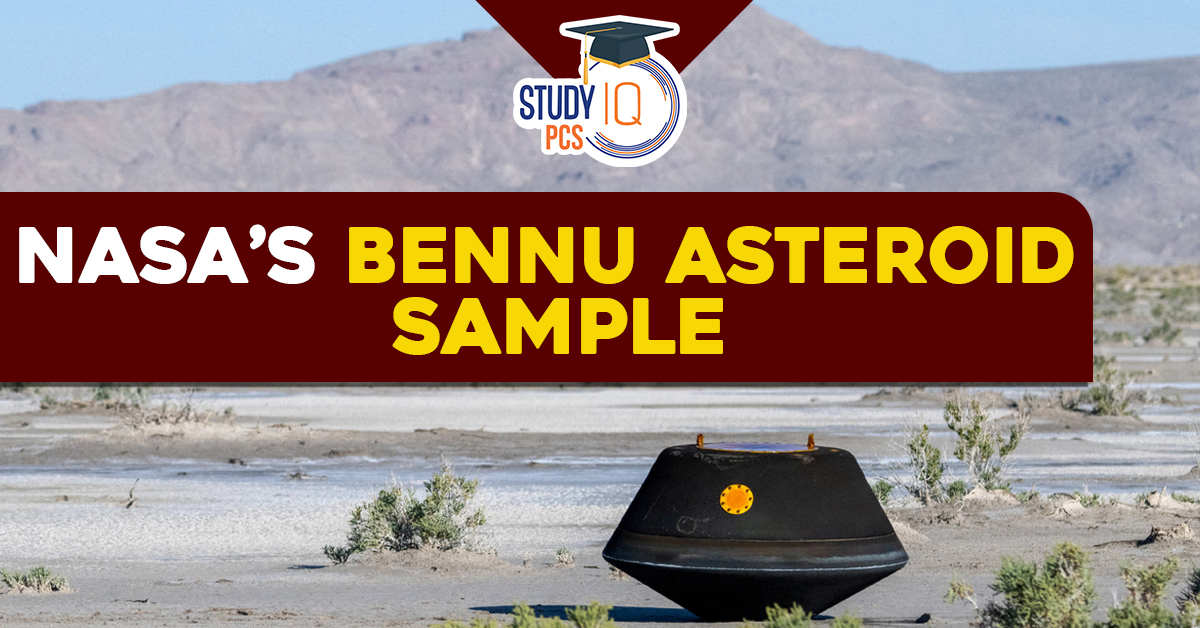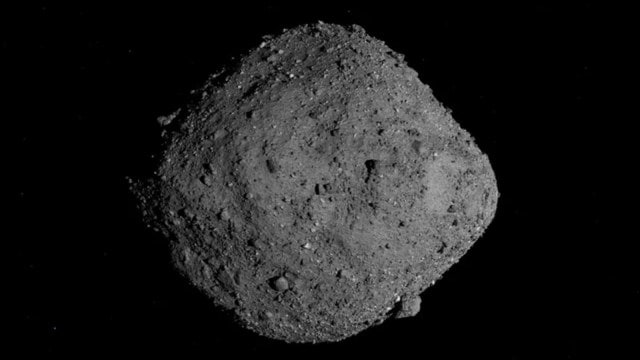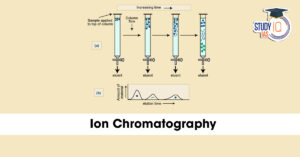Table of Contents
Context: A recent study on rock and dust samples retrieved from the asteroid Bennu provides strong evidence that space rocks may have played a crucial role in seeding early Earth with the fundamental chemical ingredients for life.
About Bennu
- Bennu is a near-Earth asteroid that formed 4.5 billion years ago from remnants of a larger celestial body.
- It is a “rubble pile” asteroid, meaning it is a loosely bound collection of rocky debris rather than a solid object.
- Bennu’s parent body was an icy celestial object, estimated to be 100 km (60 miles) in diameter, which was destroyed 1-2 billion years ago.
About NASA’s OSIRIS-REx Mission
- It was launched in 2016 to study Bennu and collect samples.
- In 2020, OSIRIS-REx successfully collected rock and dust from Bennu’s surface.
- The samples were brought back to Earth in September 2023, landing in the Utah desert via a parachute-equipped capsule.
- These samples are the first pristine asteroid samples collected directly from space, eliminating concerns about Earthly contamination, unlike meteorite samples.
Key Findings from Bennu Samples
- Building Blocks of Life Found: Scientists discovered 14 amino acids (used to make proteins) and all 5 nucleobases (genetic material in DNA & RNA).
- These are essential for life but not actual life—just ingredients that could help life form.
- Water and Salty Minerals Present: Bennu’s parent body had water in the past.
- Brine (salty water) evaporated, leaving behind minerals—suggesting a wet environment suitable for chemical reactions.
- Supports the “Life from Space” Theory: Asteroids like Bennu may have brought essential molecules to early Earth, helping life start.
- Similar processes might have happened on other planets
- No Earth Contamination: Unlike meteorites, Bennu’s samples were collected directly from space and remained untouched by Earth’s environment.
- This confirms that the organic materials truly came from space.



 Advanced Air Defence Radars: Types, Comp...
Advanced Air Defence Radars: Types, Comp...
 Ion Chromatography, Working and Applicat...
Ion Chromatography, Working and Applicat...
 Broadly Neutralising Antibodies (bNAbs):...
Broadly Neutralising Antibodies (bNAbs):...

























